Oaxacan cuisine, known for its rich flavors and diverse ingredients, offers a fascinating exploration of regional varieties within Mexican food. One example that exemplifies the uniqueness of Oaxacan cuisine is the traditional dish called mole negro. Mole negro combines various spices, including chili peppers, chocolate, and nuts, to create a complex sauce that is then served over meats or vegetables. This distinctive combination of ingredients highlights the intricate nature of Oaxacan cooking and showcases the region’s commitment to maintaining culinary traditions.
Beyond mole negro, Oaxaca boasts an array of other regional specialties that have captured the attention of food enthusiasts worldwide. Tlayudas, for instance, are large tortillas topped with beans, cheese, meat, and salsa; while tamales oaxaqueños feature banana leaves wrapped around masa dough filled with savory fillings such as chicken or pork cooked in signature Oaxacan spices. These unique dishes demonstrate how Oaxacan cuisine reflects not only local preferences but also cultural influences from indigenous communities that have inhabited this region for centuries.
The distinctiveness of Oaxacan cuisine can be attributed to several factors: geographical location, historical heritage, and agricultural resources. Nestled in southern Mexico and surrounded by mountains and fertile valleys, Oaxaca benefits from a diverse range of ingredients that contribute to its culinary richness. The region’s fertile soil allows for the cultivation of various crops, including corn, beans, and chili peppers, which form the foundation of many Oaxacan dishes. Additionally, Oaxaca is known for its abundant supply of tropical fruits such as mangoes and papayas, as well as unique ingredients like hoja santa (sacred leaf) and edible flowers.
Oaxacan cuisine also reflects the historical heritage of the region. The state of Oaxaca has a long history of indigenous cultures, such as the Zapotec and Mixtec civilizations, whose culinary traditions have influenced modern-day Oaxacan dishes. These ancient civilizations cultivated traditional cooking techniques and used native ingredients that are still prevalent in Oaxacan cuisine today.
Furthermore, Oaxaca’s geographical location has allowed it to become a melting pot of cultural influences. The region has been a crossroads for trade routes throughout history, resulting in the blending of culinary practices from neighboring states and even international flavors brought by European explorers. This fusion of different cultures has contributed to the diversity and uniqueness of Oaxacan cuisine.
Overall, Oaxacan cuisine stands out for its rich flavors, complex sauces like mole negro, and inventive use of local ingredients. Its distinctive nature can be attributed to factors such as geographical location, historical heritage, and agricultural resources. Exploring this regional variety within Mexican food offers an exciting journey into the vibrant world of Oaxacan gastronomy.
Oaxacan cuisine: A Brief Overview
Oaxacan cuisine, known for its rich flavors and diverse regional varieties, offers a fascinating exploration of Mexican food. To illustrate the complexity and appeal of this culinary tradition, let us consider the case of Mole Negro, one of the most famous dishes from Oaxaca.
Mole Negro is a complex sauce made with multiple ingredients such as chili peppers, chocolate, spices, nuts, and sometimes even fruit. Its preparation requires skillful blending and roasting techniques to achieve the perfect balance between sweet and savory flavors. This dish exemplifies the intricate nature of Oaxacan cuisine where unique combinations create truly extraordinary tastes.
To fully appreciate the depth and diversity of Oaxacan cuisine, it is important to understand the key elements that make it so distinct:
- Culinary traditions: Passed down through generations, traditional cooking methods play an integral role in preserving the authenticity of Oaxacan recipes.
- Indigenous ingredients: The use of native ingredients like corn, beans, tomatoes, avocados, and various types of squash reflects the strong influence Indigenous cultures have on Oaxacan gastronomy.
- Slow-cooking techniques: Many Oaxacan dishes require long hours of simmering or roasting over low heat to bring out their full flavor potential.
- Artistic presentation: In addition to taste sensations, visual aesthetics are highly valued in Oaxacan cuisine. Elaborate garnishes and colorful arrangements enhance not only the dining experience but also provide cultural significance to each dish.
This table showcases four iconic dishes from different regions within Oaxaca:
| Region | Iconic Dish |
|---|---|
| Central | Tlayudas |
| Valley | Estafado de Conejo |
| Coast | Ceviche de Camarón |
| Isthmus | Mole Amarillo |
In conclusion, Oaxacan cuisine offers a captivating journey into the rich tapestry of Mexican food. From the intricate flavors of dishes like Mole Negro to the use of indigenous ingredients and artistic presentation, every aspect contributes to its unique identity. In the subsequent section, we will explore how these traditional recipes incorporate the influence of indigenous ingredients in more detail.
The Influence of Indigenous Ingredients
Oaxacan cuisine is known for its rich flavors and diverse regional varieties. Building upon the previous section’s brief overview of Oaxacan cuisine, this section will explore the influence of indigenous ingredients on the region’s culinary traditions.
One example that showcases the use of indigenous ingredients in Oaxacan cuisine is the dish called “Tlayudas.” Tlayudas are large tortillas made from corn masa and traditionally cooked over an open flame. These tortillas are then topped with a variety of locally sourced ingredients such as refried beans, string cheese, avocado slices, and salsa. This combination exemplifies how Oaxacan chefs skillfully incorporate traditional elements to create a unique flavor profile.
Indigenous ingredients play a crucial role in shaping Oaxacan cuisine. They lend distinct flavors and textures to dishes while preserving cultural heritage. Here are some key examples:
- Corn: Corn is a staple ingredient in Mexican cuisine, and it holds special significance in Oaxaca. Varieties like white or blue corn are used to make masa for tortillas, tamales, and other traditional preparations.
- Chiles: Oaxaca boasts a wide range of chiles with varying levels of heat and flavor profiles. From smoky pasilla mixe to spicy costeño amarillo, these chiles contribute depth and complexity to many dishes.
- Chocolate: Oaxaca is famous for its chocolate production, which dates back centuries. The region’s unique chocolate-making process involves grinding roasted cacao beans with sugar and spices like cinnamon or almonds.
- Maguey: Known as “the tree of wonders,” maguey plants provide various products essential to Oaxacan cooking. Agave syrup derived from maguey serves as a natural sweetener, while mezcal—a distilled spirit—comes from fermented agave juice.
To further illustrate the impact of indigenous ingredients on Oaxacan cuisine, consider the following table:
| Indigenous Ingredient | Flavor Profile | Culinary Uses |
|---|---|---|
| Corn | Earthy, Sweet | Tortillas, Tamales, Pozole |
| Chiles | Spicy, Smoky | Salsas, Moles, Stews |
| Chocolate | Rich, Bittersweet | Beverages, Desserts |
| Maguey | Complex, Herbal | Mezcal Production, Agave Syrup |
By incorporating these indigenous ingredients into their culinary creations, Oaxacan chefs not only highlight the region’s rich biodiversity but also pay homage to its pre-Hispanic roots.
Transitioning to the next section about “Mole: Oaxaca’s Signature Dish,” it is evident that indigenous ingredients play a fundamental role in this iconic sauce. From corn and chiles to chocolate and maguey derivatives, each ingredient contributes to the complexity and depth that make mole an integral part of Oaxacan cuisine.
Mole: Oaxaca’s Signature Dish
The Influence of Indigenous Ingredients:
Oaxacan cuisine is renowned for its rich and diverse flavors, which can be attributed to the region’s unique blend of indigenous ingredients. These ingredients not only add depth and complexity to Oaxacan dishes but also reflect the cultural heritage and culinary traditions of the area. To understand the influence of indigenous ingredients in Oaxacan cuisine, let us explore the case study of ‘Chapulines,’ a popular dish made from edible grasshoppers.
Chapulines are an integral part of Oaxaca’s gastronomy and have been consumed by locals for generations. This traditional delicacy showcases how indigenous ingredients play a pivotal role in shaping regional cuisines. The use of chapulines not only adds a distinct flavor profile but also highlights the resourcefulness and ingenuity of Oaxacan cooks who utilize locally available resources.
This emphasis on local produce is characteristic of Oaxacan cuisine as a whole. Here are some key aspects that illustrate the importance of indigenous ingredients in shaping this regional cuisine:
- Seasonal Availability: Oaxacan chefs rely heavily on seasonal produce, ensuring that their dishes showcase fresh and vibrant flavors throughout the year.
- Cultural Preservation: The use of native ingredients helps preserve ancient culinary practices, passing down knowledge from one generation to another.
- Environmental Sustainability: By utilizing locally sourced ingredients, Oaxacan cuisine promotes sustainability by reducing carbon footprint associated with long-distance transportation.
- Flavor Diversity: Indigenous ingredients contribute unique tastes and textures, resulting in a wide array of flavors that tantalize taste buds and create memorable dining experiences.
To further grasp the significance of these indigenous ingredients, consider the following table showcasing some commonly used elements in Oaxacan cooking:
| Ingredient | Description | Culinary Use |
|---|---|---|
| Mole Negro | A thick sauce made from various chilies, | Traditionally served with chicken or |
| nuts, spices, and chocolate | turkey dishes | |
| Tlayudas | Large crispy tortillas topped with beans, | Served as a street food snack or |
| meat, cheese, avocado, and salsa | main course | |
| Quesillo | Stringy Oaxacan cheese | Often used in quesadillas and other |
| melted cheese dishes |
As we delve into the richness of Oaxacan cuisine, it becomes evident that indigenous ingredients are not merely culinary components but also cultural artifacts. The use of these locally sourced elements showcases centuries-old traditions while offering an authentic taste of this vibrant region. In the following section on ‘Tlayudas: Oaxaca’s Famous Street Food,’ we will explore another delightful aspect of Oaxacan gastronomy.
(Transition sentence) Moving forward to the next section about “Tlayudas: Oaxaca’s Famous Street Food,” we uncover yet another facet of Oaxacan cuisine that tantalizes both locals and tourists alike.
Tlayudas: Oaxaca’s Famous Street Food
Building on the rich culinary heritage of Oaxaca, another standout dish that showcases the region’s vibrant flavors and cultural diversity is tlayudas. These mouthwatering street food staples offer a unique dining experience that captures the essence of Oaxacan cuisine.
Tlayudas are large, thin corn tortillas that serve as a canvas for an array of savory toppings. Picture this: you’re walking through the bustling streets of Oaxaca City, tantalized by the aroma of grilled meats wafting from street vendors’ carts. You spot a vendor expertly assembling a tlayuda, starting with a crispy tortilla base spread with smoky black bean paste known as refried beans. Next comes a generous layer of quesillo, a stringy cheese native to Oaxaca that adds creaminess to each bite. The vendor then tops it off with succulent strips of marinated grilled meat such as tasajo or cecina, fresh avocado slices, tangy salsa roja, and aromatic cilantro.
To fully appreciate the significance and appeal of tlayudas in Oaxacan cuisine, let us explore some key elements:
- Cultural Significance: Tlayudas represent more than just delicious street food; they embody centuries-old traditions passed down through generations. They symbolize communal eating experiences where friends and families gather around shared plates to savor their favorite combinations.
- Flavorful Combinations: Each component in a tlayuda contributes distinct flavors and textures that harmoniously blend together. The combination possibilities are endless – whether you prefer vegetarian options like huitlacoche (corn fungus) or crave the robust flavors of chorizo and chapulines (edible grasshoppers), there is something to satisfy every palate.
- Versatile Adaptations: While traditional tlayudas adhere to certain ingredients, modern variations have emerged over time. Creative chefs experiment with unconventional toppings like mushrooms or pineapple chunks, infusing their own unique twist into this beloved street food.
- Accessibility: Tlayudas are not limited to exclusive restaurants or upscale establishments. They are readily available from street vendors and market stalls throughout Oaxaca, making them accessible to locals and tourists alike.
Experience the allure of tlayudas by indulging in:
- Crispy tortilla bases with a satisfying crunch
- Meltingly delicious quesillo cheese that pulls apart with each bite
- Succulent grilled meats infused with smoky flavors
- Vibrant salsa roja that adds just the right amount of heat
Table (3 columns x 4 rows):
| Topping | Flavor | Texture |
|---|---|---|
| Tasajo | Savory, marinated beef | Tender |
| Cecina | Salty, dried pork | Chewy |
| Huitlacoche | Earthy, mushroom-like | Velvety |
| Chorizo | Spicy, seasoned sausage | Crumbly |
As you delve deeper into the world of Oaxacan cuisine, it becomes evident that there is much more to explore beyond mole and tlayudas. In our subsequent section about “Chapulines: Oaxaca’s Edible Insects,” we will uncover another fascinating aspect of local gastronomy that might surprise even the most adventurous eaters. So prepare yourself for an extraordinary culinary journey through Oaxaca’s diverse offerings.
Now let us dive into the intriguing realm of chapulines – edible insects that have become synonymous with Oaxacan culture and traditions.
Chapulines: Oaxaca’s Edible Insects
Tlayudas, Oaxaca’s famous street food, offers just a glimpse into the diverse and flavorful world of Oaxacan cuisine. However, there is another unique delicacy that showcases the rich culinary heritage of this region – chapulines or edible insects. While it may seem unconventional to some, chapulines play an integral role in Oaxacan gastronomy and have been enjoyed by locals for centuries.
To illustrate how chapulines are incorporated into traditional dishes, let us consider the example of “Chapulín Tacos.” These tacos feature freshly grilled chapulines seasoned with spices such as chili powder and garlic salt, then topped with onions, cilantro, and a squeeze of lime juice. The combination creates a medley of flavors – savory, tangy, and slightly crunchy. This dish exemplifies the creativity and innovation found within Oaxacan cuisine.
While eating insects might be met with hesitation from those unfamiliar with this practice, it is essential to recognize the cultural significance behind consuming chapulines in Oaxaca. Here are some key points to understand:
- Sustainability: Incorporating insects into diets can help reduce our ecological footprint due to their low environmental impact compared to traditional livestock farming.
- Nutritional Value: Chapulines are highly nutritious; they contain high levels of protein, healthy fats like omega-3 fatty acids, vitamins (B12), minerals (iron), and fiber.
- Culinary Versatility: Edible insects offer endless possibilities in cooking styles and flavor combinations. They can be used in various dishes ranging from tacos and quesadillas to salsas and even desserts.
- Cultural Appreciation: By embracing regional ingredients like chapulines in our diet, we celebrate diversity while paying homage to local traditions and customs.
Let us now shift our focus towards Mezcal – Oaxaca’s traditional spirit that perfectly complements these unique flavors. Its smoky taste and rich history make it an integral part of Oaxacan culture, inviting us to explore the depths of this vibrant region’s culinary heritage.
Mezcal: Oaxaca’s Traditional Spirit
Having explored the unique culinary tradition of chapulines in Oaxacan cuisine, we now turn our attention to another significant component that showcases the region’s rich cultural heritage. Mezcal, a traditional spirit deeply rooted in Oaxaca’s history, holds a prominent place within the diverse gastronomy of this Mexican state.
Mezcal and its Cultural Significance:
To illustrate the role mezcal plays in shaping Oaxacan culture, let us consider the Zapotec community residing in San Dionisio Ocotepec. Here, mezcal production is not merely an economic endeavor but also serves as a means for preserving ancestral traditions. The art of crafting this distilled liquor has been passed down through generations, with each family employing their distinct techniques and using locally sourced agave varieties. This commitment to maintaining ancient practices reflects the deep connection between mezcal and local identity.
- Intricate craftsmanship involved in every step of mezcal production.
- Ancestral knowledge preserved by families engaged in the trade.
- Celebration of cultural diversity through various types of agave used.
- Unique flavors and aromas that captivate the senses.
Table showcasing different types of agave used:
| Agave Variety | Region | Distinct Characteristics |
|---|---|---|
| Espadín | All regions | Versatile flavor profile |
| Tobalá | Sierra Sur | Complexity and elegance |
| Tepeztate | Mixteca | Earthy undertones |
| Madrecuixe | Central Valleys | Herbal notes |
The Impact on Local Economy and Tourism:
The production of mezcal not only contributes to the cultural fabric but also plays a vital role in Oaxaca’s economy. The artisanal nature of this spirit provides employment opportunities for numerous families, ensuring sustainable livelihoods within rural communities. Moreover, mezcalerías (mezcal bars) have become increasingly popular among locals and tourists alike, offering an immersive experience where visitors can learn about different varieties while enjoying traditional music and regional cuisine.
Incorporating ancient traditions, unique craftsmanship, diverse flavors, and economic significance, mezcal stands as a testament to Oaxaca’s culinary heritage. Its presence resonates throughout the region, capturing the attention of both connoisseurs and those seeking to explore new taste sensations. By embracing mezcal, individuals are invited on a sensory journey that immerses them in the vibrant tapestry of Oaxacan culture.



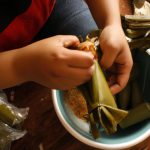
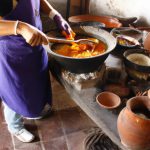

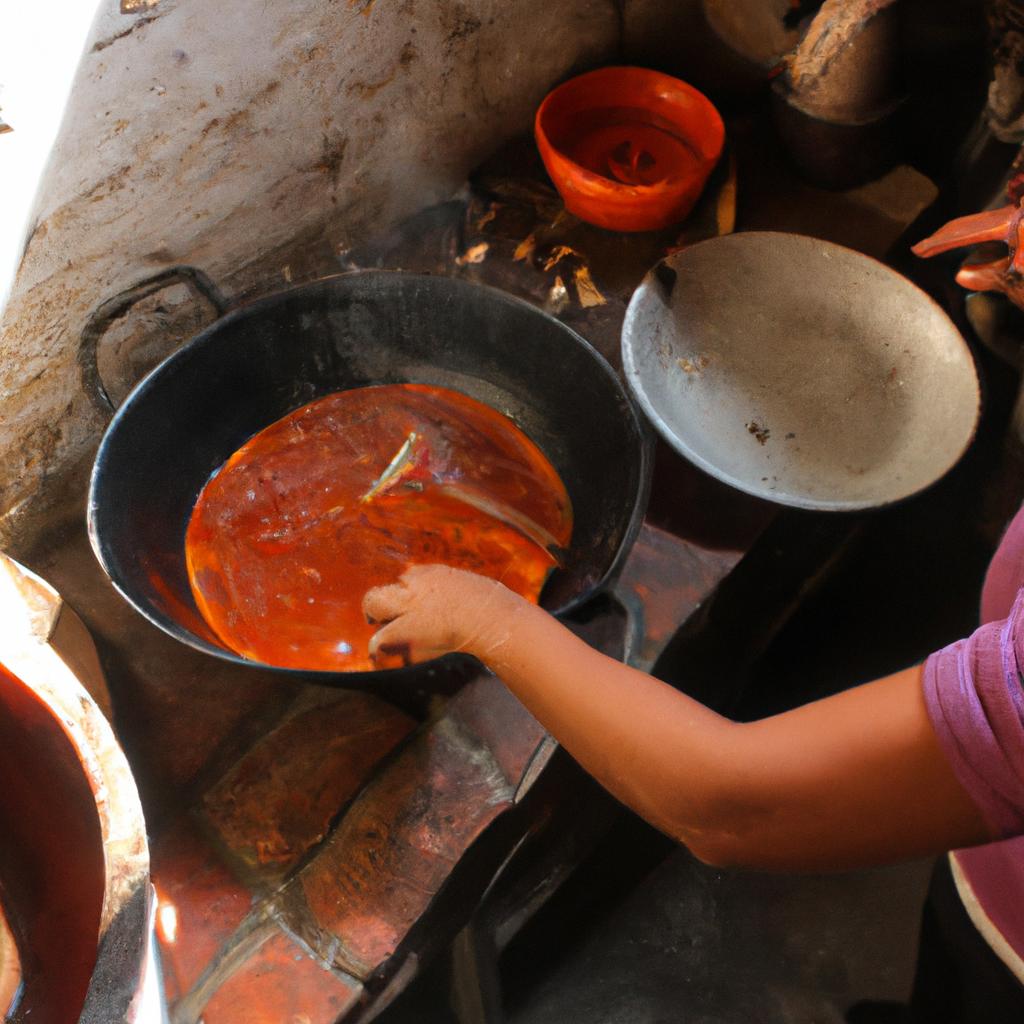


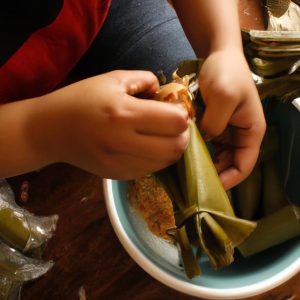
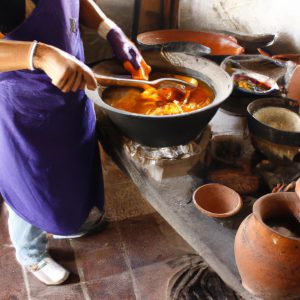
More Stories
Michoacan Cuisine: Regional Varieties of Mexican Food
Veracruzana Cuisine: Regional Varieties of Mexican Food
Tex-Mex: Regional Varieties of Mexican Food